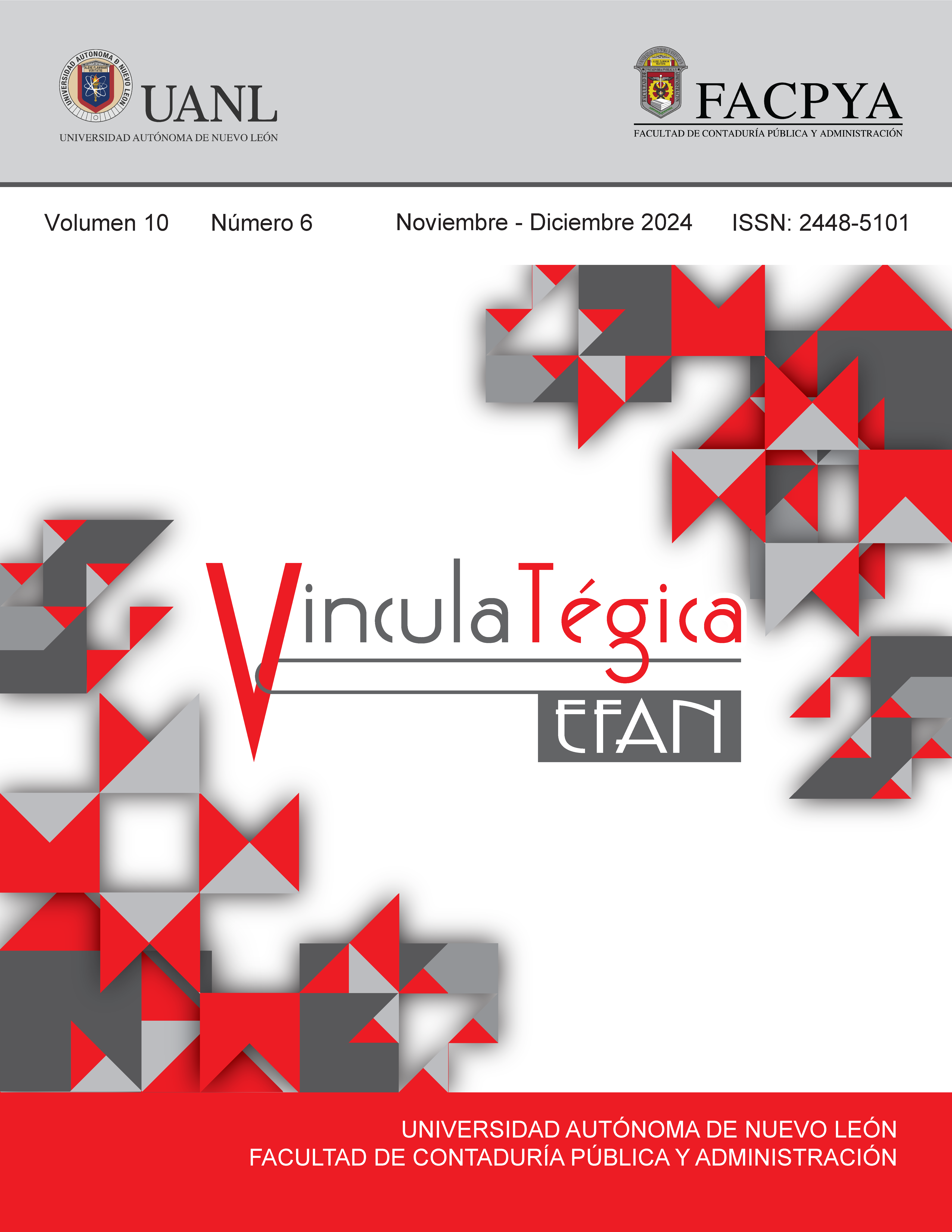Qualitative Analysis of Burnout Syndrome in the office staff of a government Entity
DOI:
https://doi.org/10.29105/vtga10.6-981Keywords:
Burnout Syndrome, vulnerable people, organizationAbstract
The study of Burnout Syndrome in an entity that serves a vulnerable population is important because the personnel working in these offices face daily situations of high emotional and social demands when providing care to people in vulnerable situations. The objective of this work was to know the perception that workers of a government agency, which serve vulnerable people, have about the presence of symptoms related to Burnout Syndrome. It is a qualitative analysis to obtain a more complete and detailed understanding of the factors that influence the occupational health and well-being of employees. Semi-structured interviews were used to allow participants to express their opinions freely and openly. Burnout Syndrome can affect their ability to provide quality and empathetic care, which has a direct impact on the quality of life of the users served. It can impact on the functioning and effectiveness of the organization. High staff turnover, decreased productivity and quality of services, and increased absenteeism are just some of the negative effects it can have on an organization.
Downloads
References
Arroyo- Araya & Morera- Hernández, 2012. SÍNDROME DE FATIGA CRÓNICA. Revista Científica Odontológica vol. 8, núm. 2, P.30.
Apiquian, A. (2007). El Síndrome del Burnout en las Empresas. Recuperado el 22 de marzo de 2019, de http:// www.anahuac.mx/psicologia/.
Delgado Herrada, M. I. (2020). Necesidades psicológicas básicas, el compromiso laboral y el síndrome de burnout en profesores de educación básica (Doctoral disertación, Universidad Autónoma de Nuevo León).
Gómez Mujica, Aleida y Acosta Rodríguez, Heriberto. Sobre el trabajo en grupos o equipos. 2003, vol. 11, num.6 Disponible en: http://scielo.sld.cu/scielo.php?script=sci_arttext&pid=S 1024-94352003000600011&lng=es&nrm=iso>. ISSN 1024-9435.
Guerrero, E. (2000). Una investigación con docentes universitarios sobre afrontamiento del estrés y el síndrome del “quemado”. Recuperado el 5 de abril de 2019, de http://www.rieoei.org/profesion17.htm.
Herrera Sánchez, R., & Cassals Villa, M. (2005). Algunos factores influyentes en la calidad de vida laboral de enfermería. Revista Cubana de enfermería, 21(1), 1-1.
Leka, S., Jain, A. y Organización Mundial de la Salud. (2010). Impacto en la salud de los riesgos psicosociales en el trabajo: una visión general.
López-Botello, C. K., Segovia-Romo, A., & Morán-Huertas, A. J. (2020, julio). Las Jornadas laborales y la cultura organizacional como desencadenantes del Síndrome de Burnout en el personal de salud: REVISTA VINCULATEGICA P.968.
López, González, W. O. (2013, abril). El estudio de casos: Una vertiente para investigación educativa. Red de revistas científicas de América Latina, el Caribe, España y Portugal. Vol. 17.num.56, p.p. 139–144.
Llanos Reynoso, LF, & Villarreal Coindreau, MJ (2022). Acuerdos y desacuerdos entre los jefes y los subordinados sobre la admiración del liderazgo. Revista Universidad y Empresa, 24 (42). DOI: https://doi.org/10.12804/revistas.urosario.edu.co/empresa/a.10845
Maslach, C. (2003). Job burnout new directions in research and intervention.Current directions in psychological science,12(5), 189-192. DOI: https://doi.org/10.1111/1467-8721.01258
Organización Internacional del Trabajo; OIT; 2021. Salud y seguridad en trabajo en América Latina y el Caribe. Disponible en: https://www.ilo.org/americas/temas/salud-y-seguridad-entrabajo/lang--es/index.htm
O’Brien, J. L. (2010). Structural empowerment, psychological empowerment and burnout in registered staff nurses working in outpatient dialysis centers (Doctoral dissertation, Rutgers University-Graduate School-Newark).
Zabaleta, A., Luna, M. A., & Irina. (2023). Análisis de los efectos causados por estrés laboral en los trabajadores de call center para el servicio de atención al cliente en entidades prestadora de salud EPS.
Downloads
Published
How to Cite
Issue
Section
License
Copyright (c) 2024 Berenice Aquino Espinosa Reyes, Karina Valencia Sandoval, Alejandra Corichi García

This work is licensed under a Creative Commons Attribution 4.0 International License.
a). Authors keep copyright and give the journal the right of the first publication of the work under a Creative Commons attribution license. This license allows others to share the work as long as original authorship and initial publication in this journal is acknowledged.
b). Authors may make other independent and additional contractual agreements for the non-exclusive distribution of the version of the article published in this journal (e.g., include it in an institutional repository or publish it in a book) as long as they clearly indicate that the work was published for the first time in this journal.







